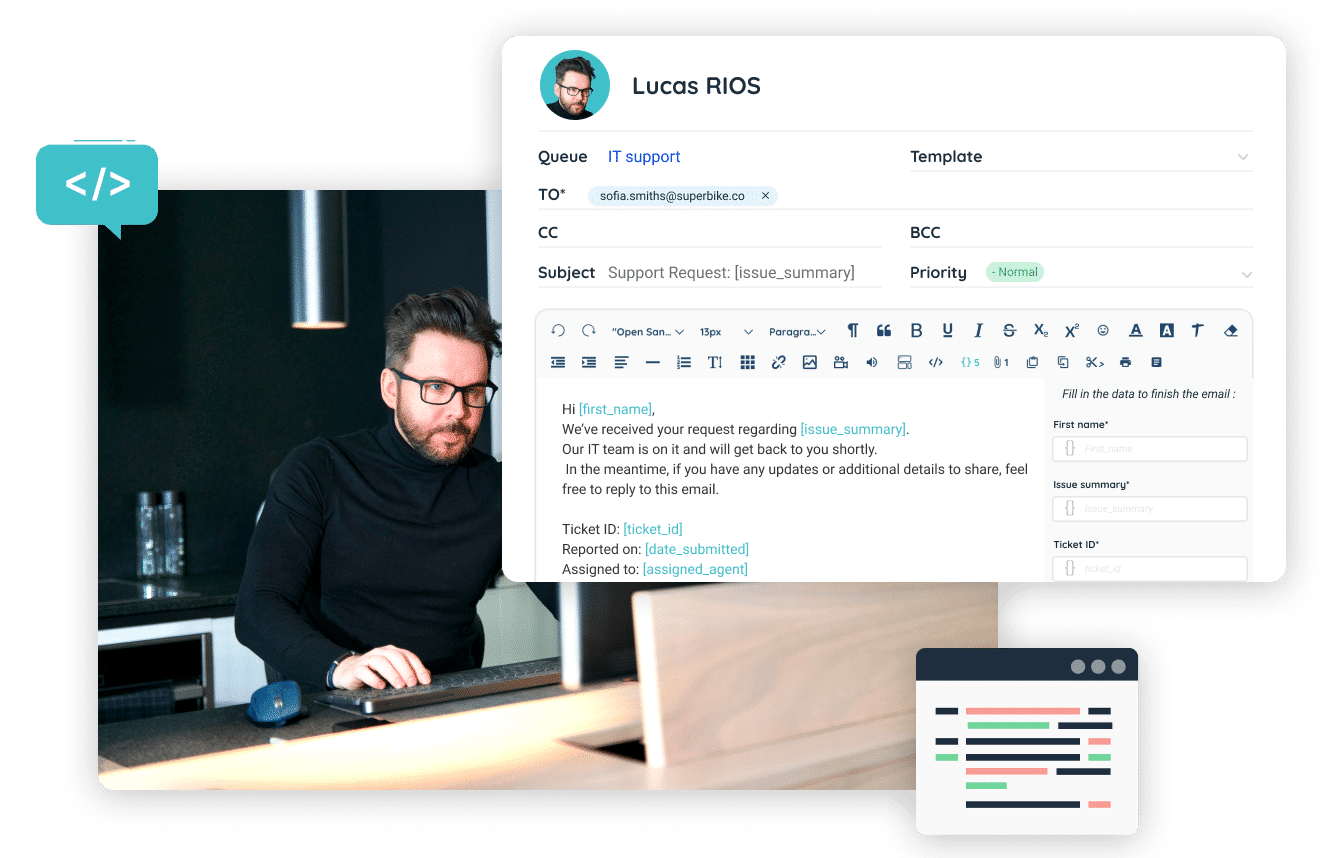
In my opinion, INO is a complete, easy-to-use and scalable centralized solution that meets my current and future needs. We are delighted with the teams’ support and appreciate their availability, kindness and dynamism!

CCF, a Sonepar subsidiary, distributes safety cables and security solutions across 12 local agencies in France.
To enhance service quality, CCF transformed its agency-based support into a centralized technical hotline—facing key challenges and adopting new support strategies.
Voice, email
Support, files, tasks, voice channel, KPIs
I have been Technical Manager at CCF for almost 3 years. I supervise and develop hotline and after-sales services at a national level. On a daily basis, I manage a team of 3 technicians spread across different sites.
We handled support requests directly in the agencies, provided that the agencies had technicians and that they were available. If they did not have anyone, the sales representatives took care of the requests with the help of our manufacturers. From an organizational point of view, each agency only took care of its own customers.
Our previous organization complexified the incidents follow-up and did not allow us to provide our customers with responsive support. To improve customer satisfaction and cope with our business’ development, our organization has evolved, and a national technical support hotline has been set up.
My service activities are diverse. Besides managing call flows, we provide direct support to our customers on site, and we follow up on technical requests related to manufacturers. The main challenge is to be able to quickly provide a quality answer to our customers. We have to be responsive, attentive and rigorous in processing requests.
Since we have a hotline, we started by setting up a phone number. We chose a 09 number, a no geographic number included in all phone packages.
This choice allows us to centralize all requests and qualify them through an Interactive Voice Server. Once qualified, the caller is put in touch with the most relevant technician on the requested topic.
We have associated this approach with the CRM included in the INO CX solution. Each customer has his own identification sheet, which the technician can create or complete. This allows the team to identify the customer’s referral agency and to check his previous interactions. This CRM allows the team to gain knowledge of the entire customer context before the call so it can improve how requests are handled.
We use the « file » functionality to have a more in-depth follow-up on technical requests.
After each call, we create or update a file attached to the customer profile. Thanks to the statuses associated to files (in progress, completed etc), we can better monitor the progress of customer requests. We have already created over 2,000 files since the beginning of the year !
As my team is spread across different sites, I need to have a clear and precise vision of the department activity.
On an organizational point of view, I receive data reports related to my technicians’ activities. I can use them to set their goals.
As a manager, I have access to dashboards that provide me with key KPIs visually and synthetically. These KPIs allow me to better understand the distribution of my team’s workload and to make managerial decisions such as anticipating the service future needs.
First, we have had a lot of positive feedbacks from our customers regarding their requests’ treatment.
From an organizational point of view, the performance indicators have helped me quantify the technical demands. I now have a vision of the hourly distribution of the 4,000 calls that my department has dealt with since the beginning of the year. This information allowed me to identify the time slots in which my team is in demand, to adapt both workforce and organization.
Finallly, we now ensure flawless requests follow-up. If a technician is missing, the other collaborators have the same level of information on the customer and his request.
Step by step, we are adding channels to contact our services. From the start of the project, it was planned to deploy email as a second communication channel.
Now that we have quantified our call volumes and know we can handle them, we are ready to deploy email. Obviously, we will still benefit from all the strategies that have seduced us on the voice channel (customer identification in database, files…).





